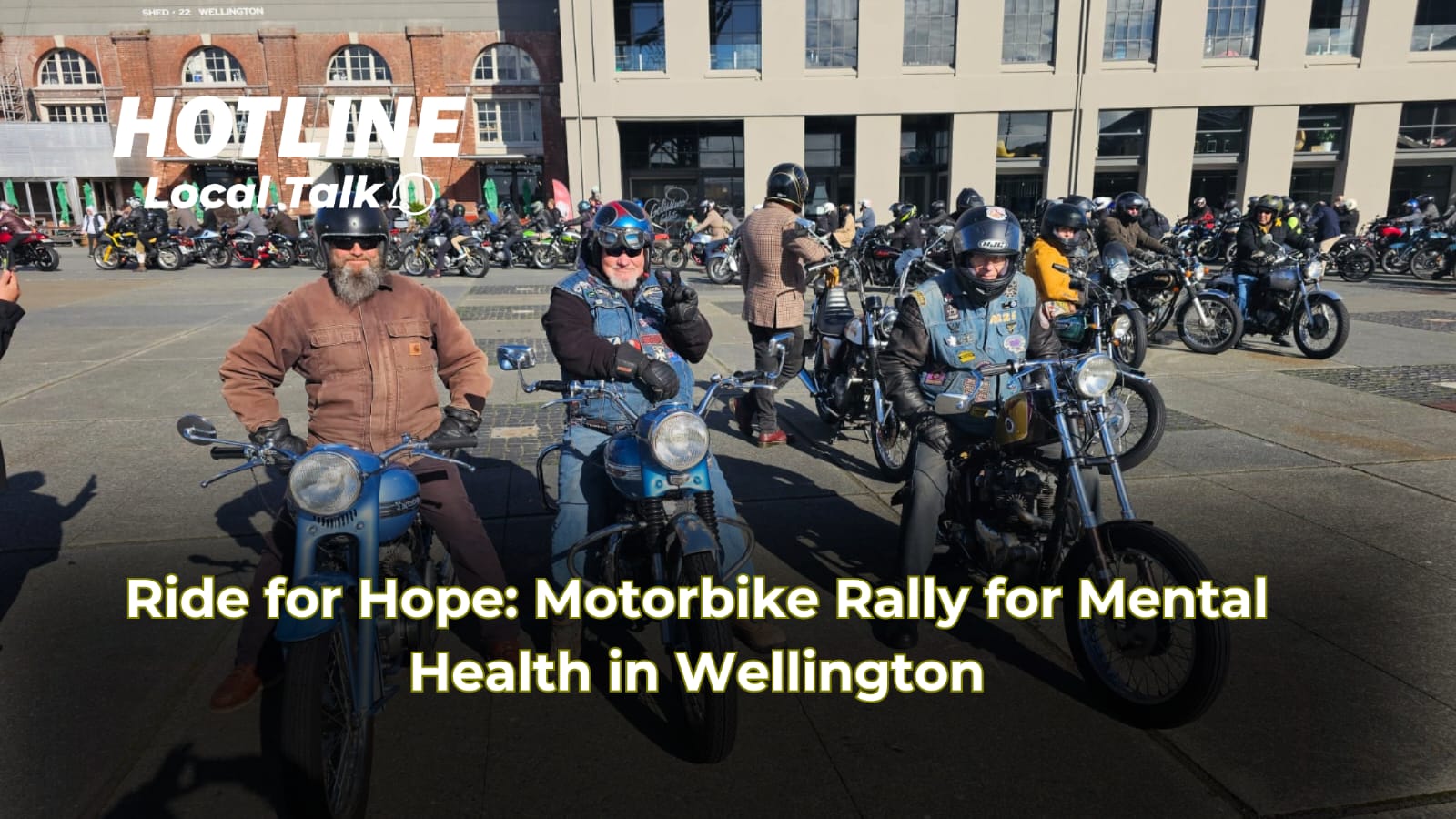Here at One Network Wellington Live, we love digging into the stories that keep Wellington buzzing, and few tales grip the city like the chilling murders of Eugene and Gene Thomas. It’s a story that unfolded right in the heart of our capital, on a quiet Tuesday in May 1994, and even now, more than 30 years later, it’s got people talking. So, let’s take you back to that fateful day on Dixon Street, where a double killing turned into one of New Zealand’s most debated crimes—perfect for anyone searching for Wellington’s darkest secrets.
Picture this: it’s 10 May 1994, and Wellington is humming along as usual. Meanwhile, inside the Hope Gibbons Building, a grand old spot on Dixon Street, something awful is about to happen. Eugene Thomas, a 66-year-old money man with a sharp mind, and his son Gene, 39, a chip off the old block, are working in their office. They’re big names in finance, sorting loans and investments, but today, their luck runs out. Suddenly, gunshots rip through the air—quiet ones, mind you, thanks to a homemade silencer. When the smoke clears, both men are dead, shot at close range with a .32-calibre gun. It’s cold, it’s brutal, and it’s about to shake the city to its core.
Now, fast forward a few hours, and the police are swarming the place. The scene is grim—two bodies, blood on the carpet, and no obvious suspect. But then, along comes John Barlow, a 47-year-old bloke who’d done business with the Thomases. He’s not your typical villain; he’s just a guy who owed them cash. Barlow strolls into the cop shop with a wild story. He says he turned up for a meeting, found Eugene and Gene already dead, and freaked out. Panicking, he grabs a pistol he’d lent Eugene earlier—a CZ 27 registered in his name—and bolts. Later, he chucks it in a rubbish tip, along with some .32-calibre bullets and bits of a chopped-up silencer. Sounds dodgy, right? Well, it gets weirder.
Here’s the kicker: the gun Barlow dumped had a .22-calibre barrel, not the .32 that killed the Thomases. So, if his gun didn’t match the murder weapon, how did he end up in the frame? The police reckon the silencer ties him to it, and they dig deeper. Meanwhile, the newspapers go mental—front pages screaming about the “Dixon Street Murders.” Wellington folk can’t stop chatting about it over their flat whites. Was Barlow a killer, or just a bloke in the wrong place at the wrong time? That’s the question everyone’s asking, and it’s why this story still pops up when you search for Wellington’s famous crimes.
So, the cops build their case. They’ve got Barlow’s gun story, the dumped evidence, and some fancy FBI experts saying the silencer matches the crime. But it’s shaky—really shaky. Barlow’s hauled into court, and the first trial kicks off. The jury can’t decide; it’s a hung jury. Then, a second trial—same deal. By now, people are hooked, and the debate’s raging. Finally, in 1995, after a third go, the jury says guilty. Barlow’s banged up for life, and the judge throws away the key—or so it seems. But hold on, because this tale’s got more twists than a windy Wellington street.
While Barlow’s rotting in jail, the doubts start piling up. For starters, the motive’s fuzzy. Sure, he owed the Thomases money, but was it enough to kill? And that gun mismatch—it’s nagging at everyone. Plus, the Thomases weren’t saints; they’d rubbed plenty of people up the wrong way in the finance world. Could someone else have done it? Maybe a dodgy client or a rival with a grudge? Rumours swirl, but no hard proof turns up. Meanwhile, Barlow’s shouting his innocence from behind bars, and some folks start listening.
Fast forward to 2009, and the big guns get involved—the Privy Council, no less. They take a long, hard look at the case and rip into that FBI silencer evidence, calling it “unscientific” and “rubbish.” It’s a bombshell—proof the conviction’s on wobbly ground. Yet, somehow, they still keep Barlow’s guilty verdict intact. How does that work? Wellington’s true-crime buffs are fuming, and online forums light up with theories. Search “Dixon Street Murders” today, and you’ll find heaps of posts arguing he was stitched up—or that he’s a sly fox who got what he deserved.
Eventually, Barlow gets out. After 14 years inside, he’s paroled in 2010, a free man but a marked one. He sticks to his story—I didn’t do it—and spends his days trying to clear his name. Meanwhile, the Thomas murders stay unsolved in the eyes of many. No one’s ever found the real .32-calibre gun, and the silencer’s still a puzzle. So, what happened that day? Was Barlow a scapegoat for a sloppy police job, or a crafty killer who fooled us all? Here at One Network Wellington Live, we reckon it’s the kind of mystery that’ll keep you up at night.
Now, let’s think about Eugene and Gene for a sec. They weren’t just victims—they were players in a murky game. Finance isn’t all clean deals and handshakes; it’s got dark corners. Maybe they crossed someone big, someone who knew how to vanish after pulling the trigger. Or perhaps Barlow’s tale is bunk, and he swapped barrels to throw everyone off. Either way, the truth’s buried deeper than a Wellington winter fog, and it’s why this story’s pure gold for anyone hunting Wellington’s wildest crime tales.
Today, if you stroll down Dixon Street, it’s all cafes and shops—no hint of the bloodshed. But ask a local about the murders, and you’ll get an earful. Some swear Barlow’s innocent; others reckon he’s guilty as sin. It’s the kind of yarn that splits mates over a pint and gets keyboards clacking online. Search “Wellington unsolved murders” or “John Barlow case,” and you’ll see it’s still hot—perfect for SEO clicks and viral chats.
So, what’s the takeaway from all this? For us at One Network Wellington Live, it’s simple: the Dixon Street Murders are a cracking story that won’t die. It’s got drama, dodgy evidence, and a big fat question mark—everything you need to hook readers and spark a row. Was justice served, or did it flop? Did Barlow do it, or is the real killer laughing somewhere? We’ll let you decide. But one thing’s sure—next time you’re near Hope Gibbons, you might feel a chill, wondering what really went down that May day in ’94.
Back then, Wellington learned a hard lesson: even in a quiet city, darkness can strike. And now, in 2025, we’re still picking at the threads. So, if you’re after a tale to share, to debate, to dig into—this is it. From One Network Wellington Live, we say dive in, tell your mates, and watch the comments roll. Because when it comes to the Thomas murders, everyone’s got an opinion, and no one’s got the full story—yet.
TRUTH SEEKER
Instantly run a Quiz with friends... about the article. Interact more & analise the story. Dig in, catch out biased opinions, and "fact check" with TRUTH SEEKER by ONENETWORK WELLINGTONLIVE 👋
Do you agree with the main argument of this article?
Total votes: 0
What is the topic of the article?
Bias Analysis
Fact Check Summary
Cannot fact check without actual content.
Source: N/A
Cannot verify without actual content.
Source: N/A








